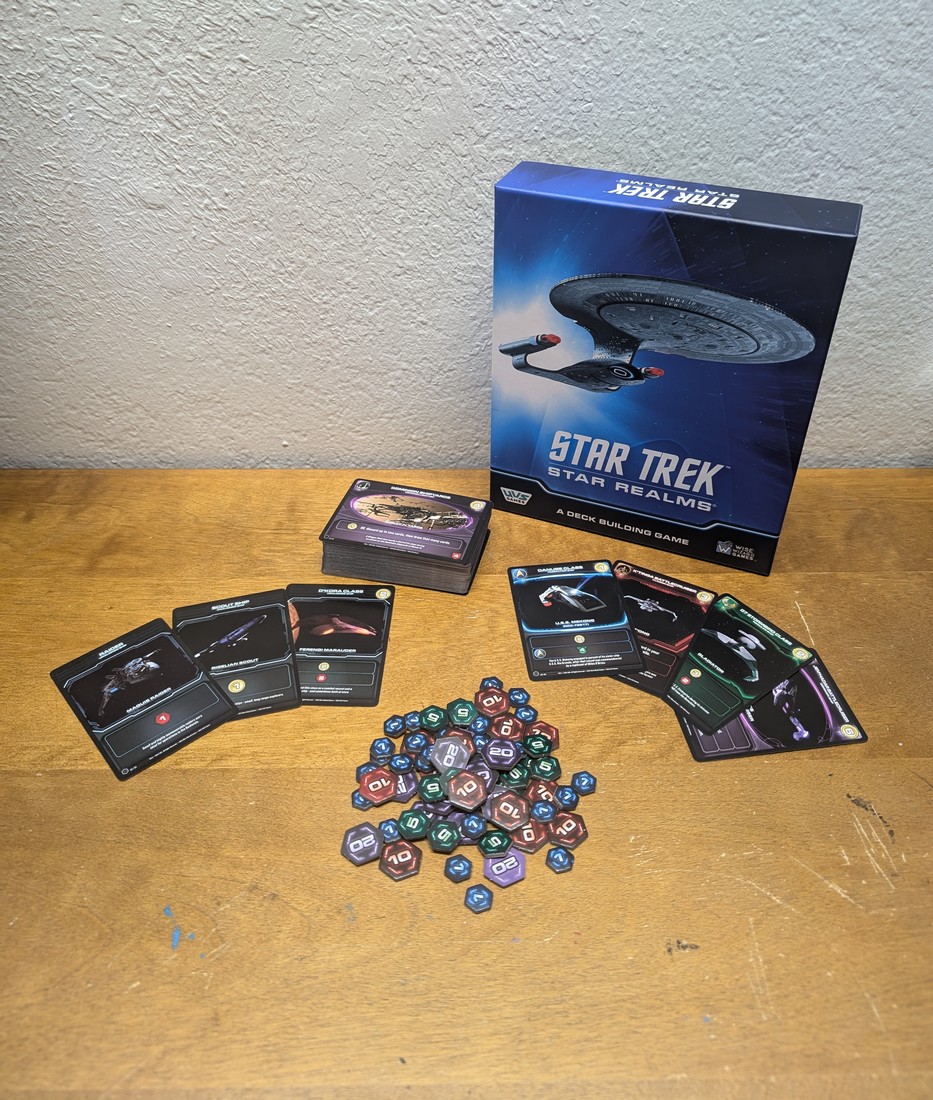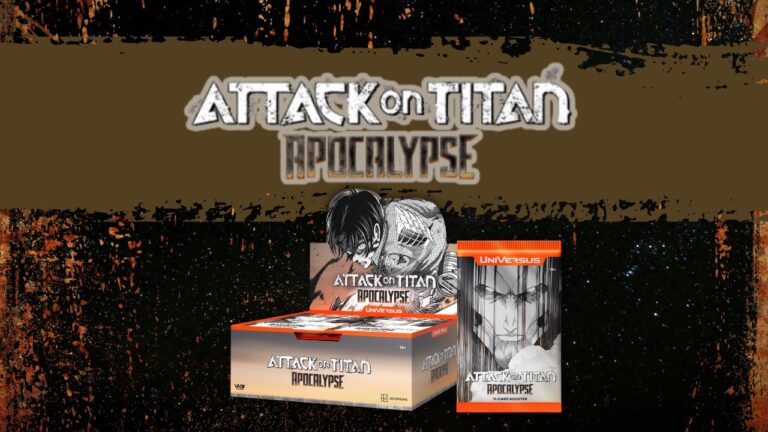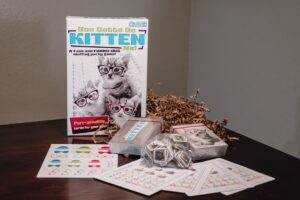UVS Games has collaborated with Wise Wizard Games to bring home a piece of the legendary Star Trek universe. In Star Trek: Star Realms, players construct personal decks from two primary card types: Ships and Locations. While forming these decks, players battle against each other. The game unfolds over three distinct phases, during which players engage in combat, acquire new ships and locations, and strive to safeguard their authority points from being demolished by their opponent.
No prior knowledge of Star Trek is required to enjoy this game. That said, Star Trek enthusiasts will likely appreciate the inclusion of factions, ships, and locations such as the Romulans, Starfleet, Klingons, and the Dominion.
In this review, we will go over the rules and how to play for two players.
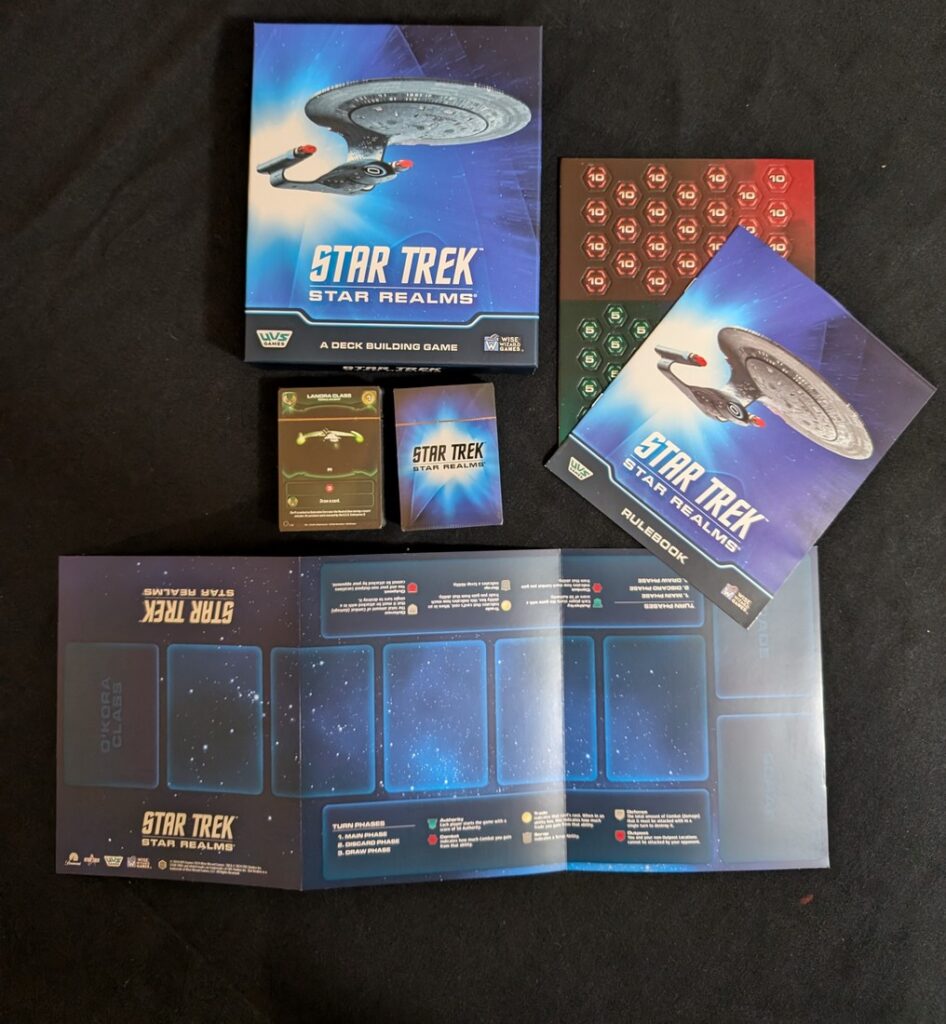
Players: 2-4 Players | Time: 30 Minutes | Ages: 14+
Setup
“Ready Your Phasers.”
These instructions are for 2 players.
Upon setting up the Playmat, every player should have 50 Authority tokens, x8 Scout Ships, and x2 Raider Ship cards to begin your Personal Decks. After deciding who will go first, shuffle your Personal Deck (there should be ten cards total) and place it beside you. Have enough space for your deck and a discard pile for each player with the Playmat between both players.
Shuffle the remaining cards, leaving out the D’Kora Class cards. The unused Scout and Raider cards should be left out of the game, as they are only used for players at the start of the game. Put the rest of the cards of locations and ships on the ‘Trade Deck’ space on the Playmat face-down. The D’Kora Class cards also go in their own space on the Playmat face-up.
Draw 5 cards from the Trade Deck and place them face-up on the Trade Row spaces. The Scrapyard should be empty for now, though as cards accumulate there, they will be face-up.
The first player will draw three cards from their Personal Deck, and the second player will draw five cards from their deck. Keep the cards in your hand private from your opponent.
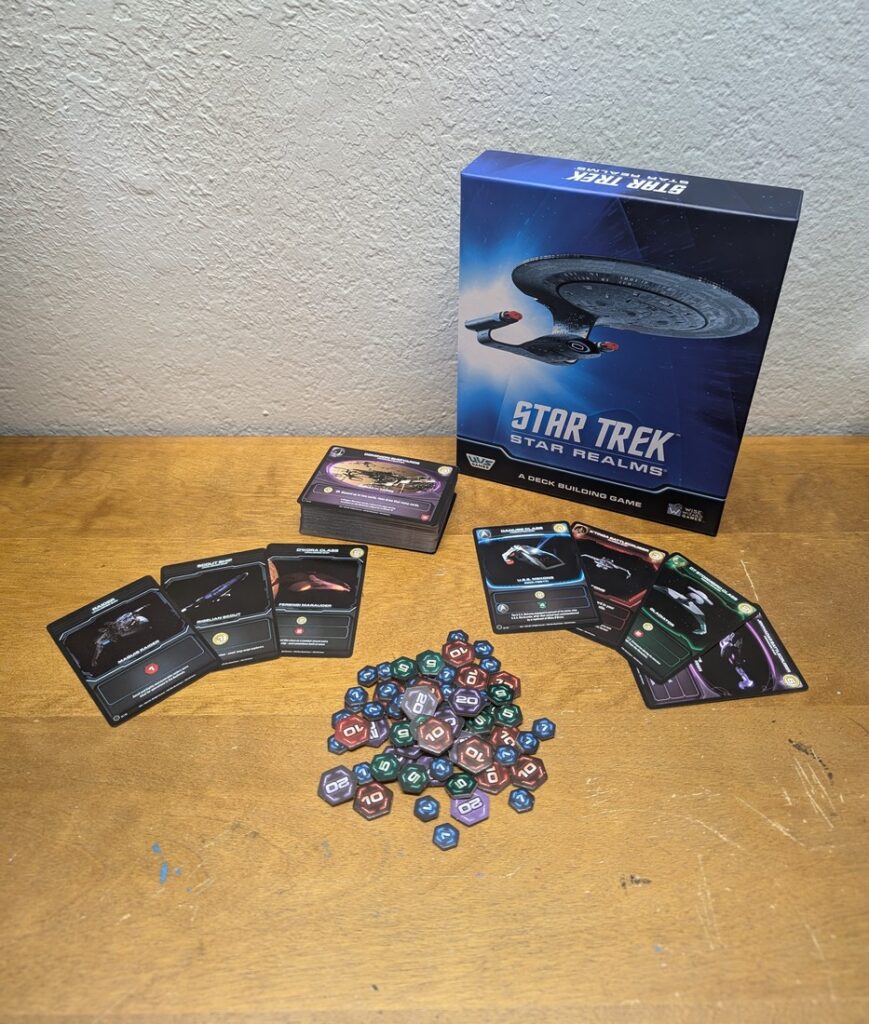
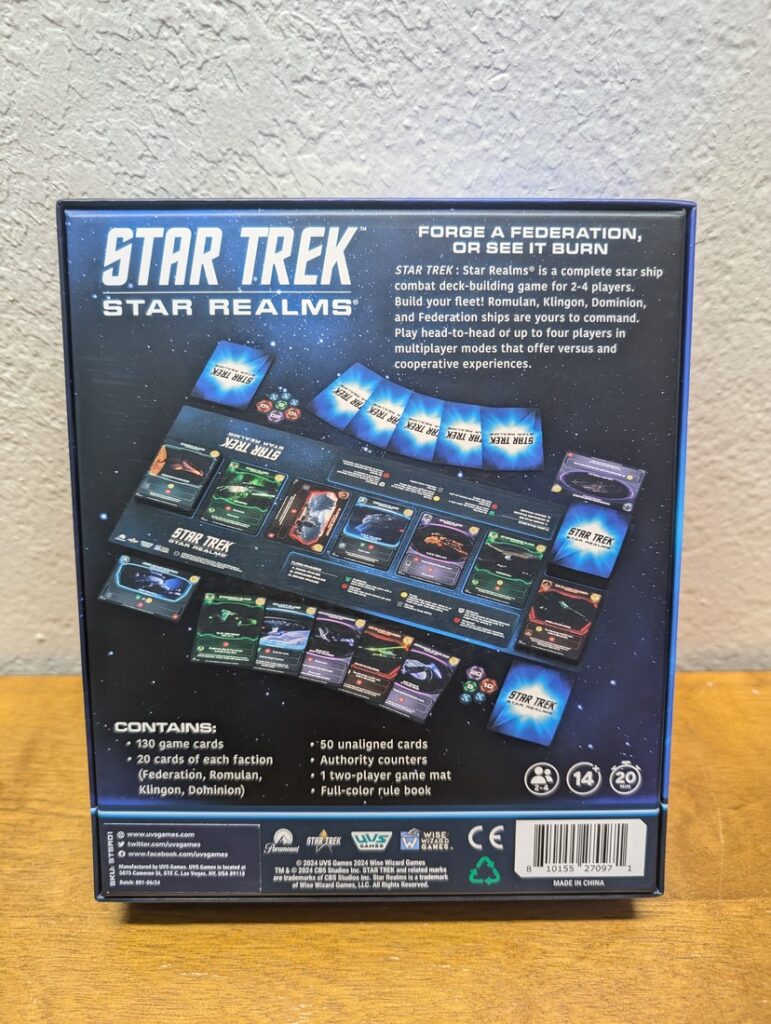
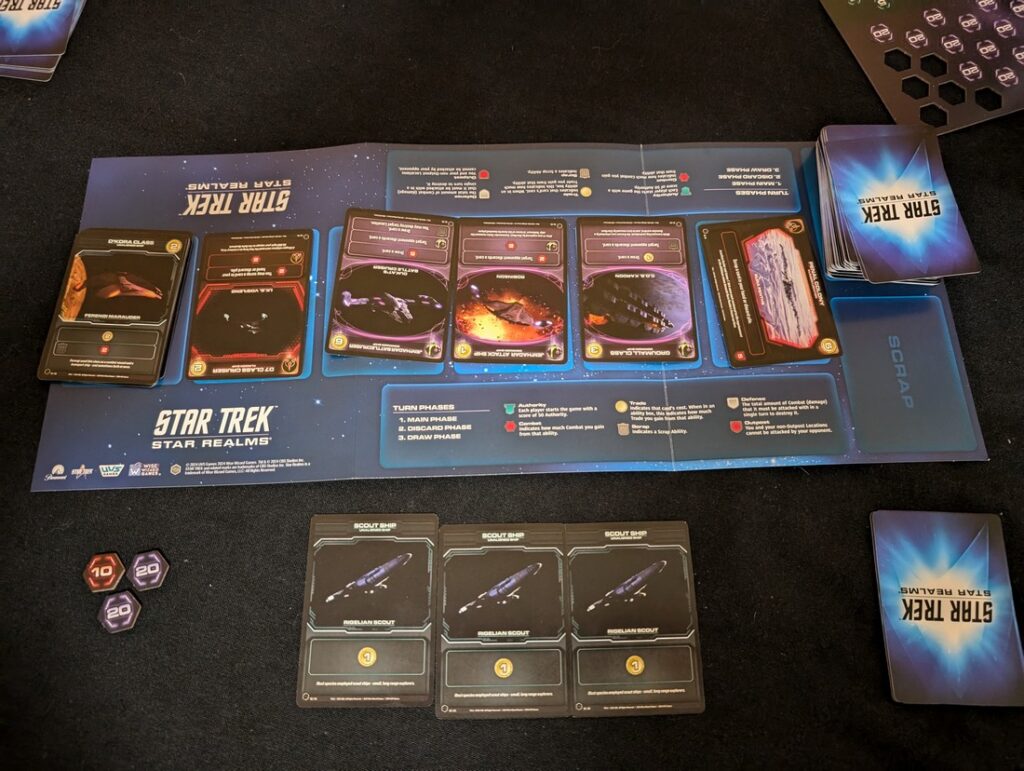
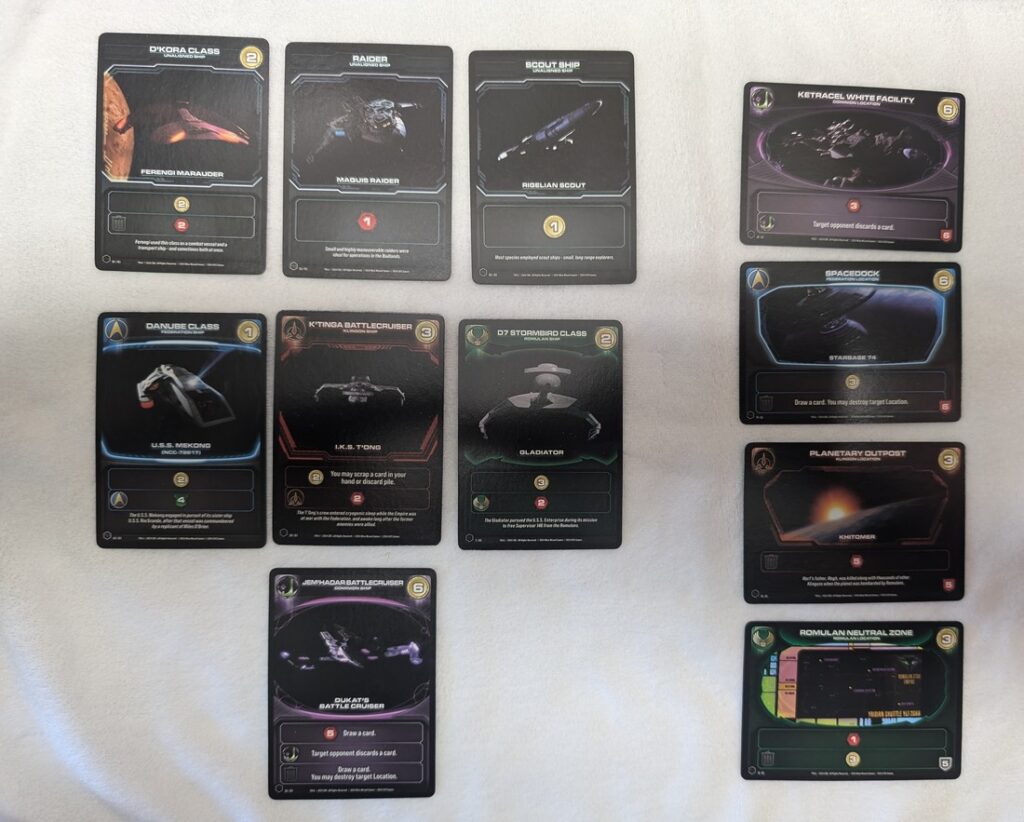
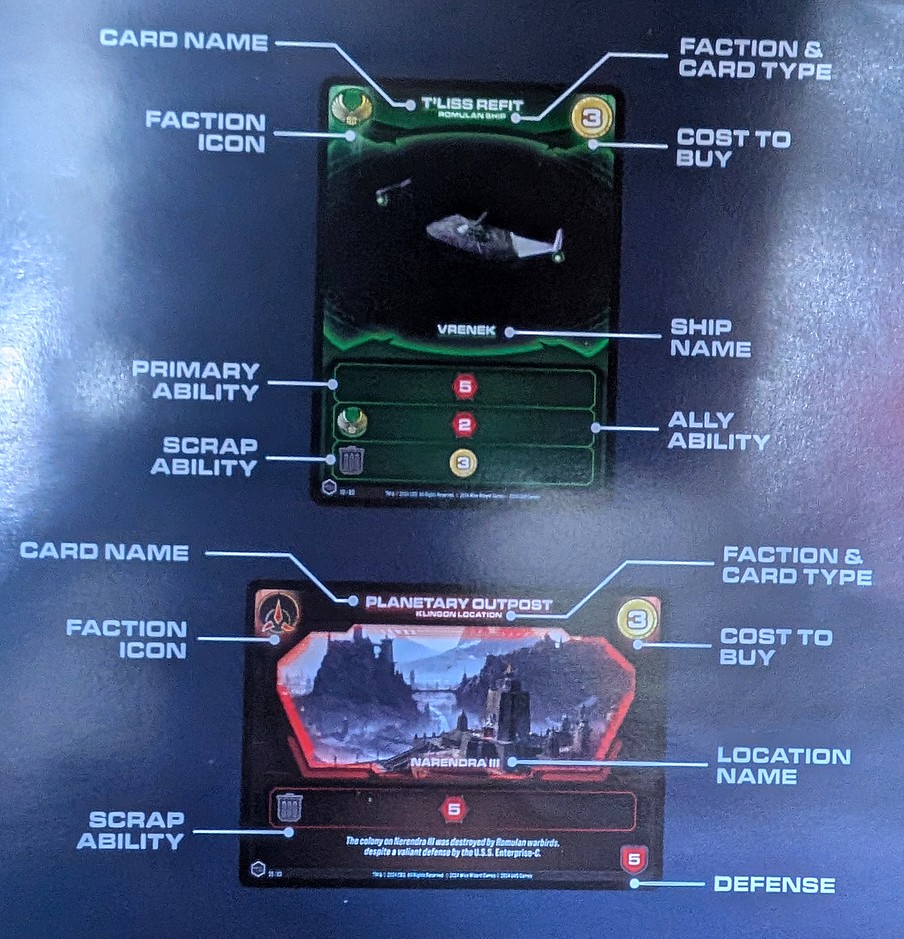
How To Play
The first player is now in the Main Phase and can play cards face-up from their hand on the table. Players can play as many cards as they want in any order during the Main Phase. Abilities such as Primary, Ally, and Scrap can be played, Trade can be used to buy cards from the Trade Row or Explorer Pile, and Combat can be dealt to the opponent or their Location/Outpost if they have one in play.
There is no cost to play cards. Once they are in your Personal Deck and hand they are yours. Simply put the card “in play” face-up in your playspace before you.
Upon placing down a Ship card, the Primary Ability is established immediately, whether this ability is to buy another card or deal combat. Ship cards might also have an Ally and/or Scrap Ability, which must meet requirements before the ability occurs. Using a Scrap Ability means the card will go to the Scrap pile on the Playmat and be unusable.
After a Ship has been played, it remains face-up in your play area until your second phase, the Discard Phase.
Playing a Location card allows the player to use its Abilities once during the Main Phase. Unlike the other cards used during the Main Phase, Location cards are not discarded at the end of a player’s turn. They remain face-up and in play until they are destroyed or scrapped. Their Defense number is located at the bottom right. Stacking Location cards act as a shield against oncoming combat from your opponent.
Some cards have other Primary Abilities, such as granting multiple effects for generating Authority and/or Trade.
All cards belong to a faction of the following: Federation, Klingon, Romulan, and Dominion. The D’Kora Classes, Scout, and Raider cards have no faction and do not have Ally abilities.
Trade and Combat
Trade is indicated as a yellow icon with a number at the top right of a Ship or Location card. A Trade icon will also be a Primary Ability, which you will see frequently. As you form your deck, you will establish a Trade Pool, the total number of Trade within your current hand. For example, if three Ship cards in your hand have a Primary Ability of various Trade numbers, you add that number up, and that is your Trade Pool to buy other cards in the Rade Row or D’Kora Class Pile.
Use this same mechanic to attack your opponent. When a card has Combat abilities, you add all the Combat from your hand, creating a Combat Pool. If your opponent does not have a Location card, the full Combat power hits their Authority. Once a player loses all their Authority points, they lose the game.
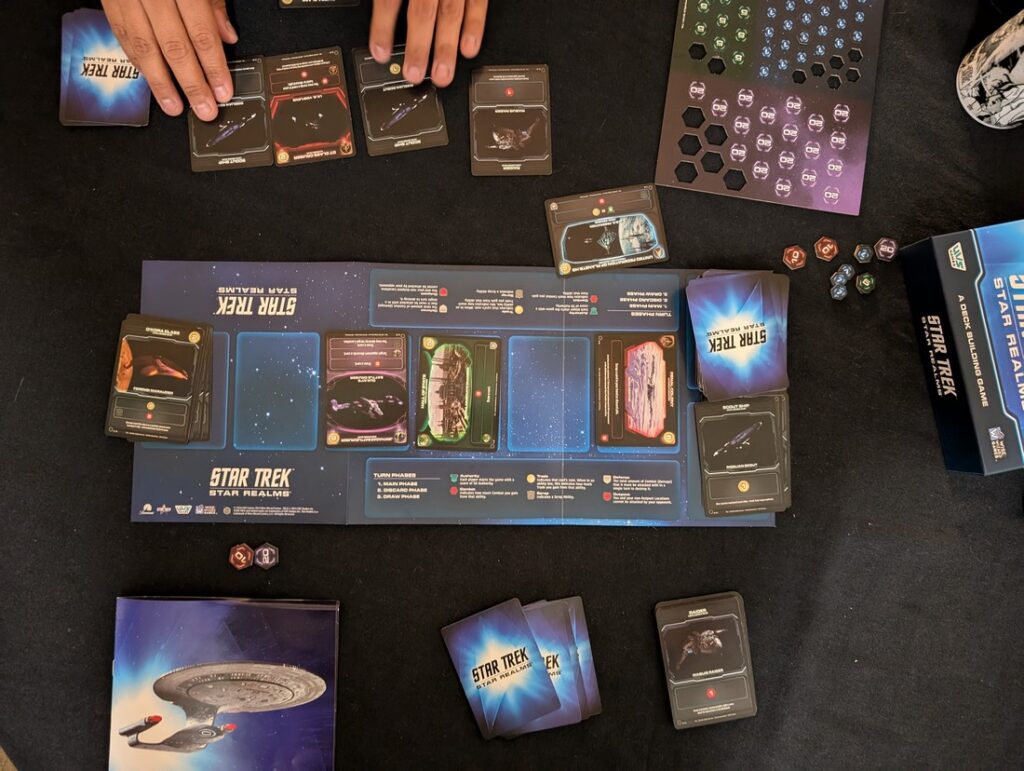
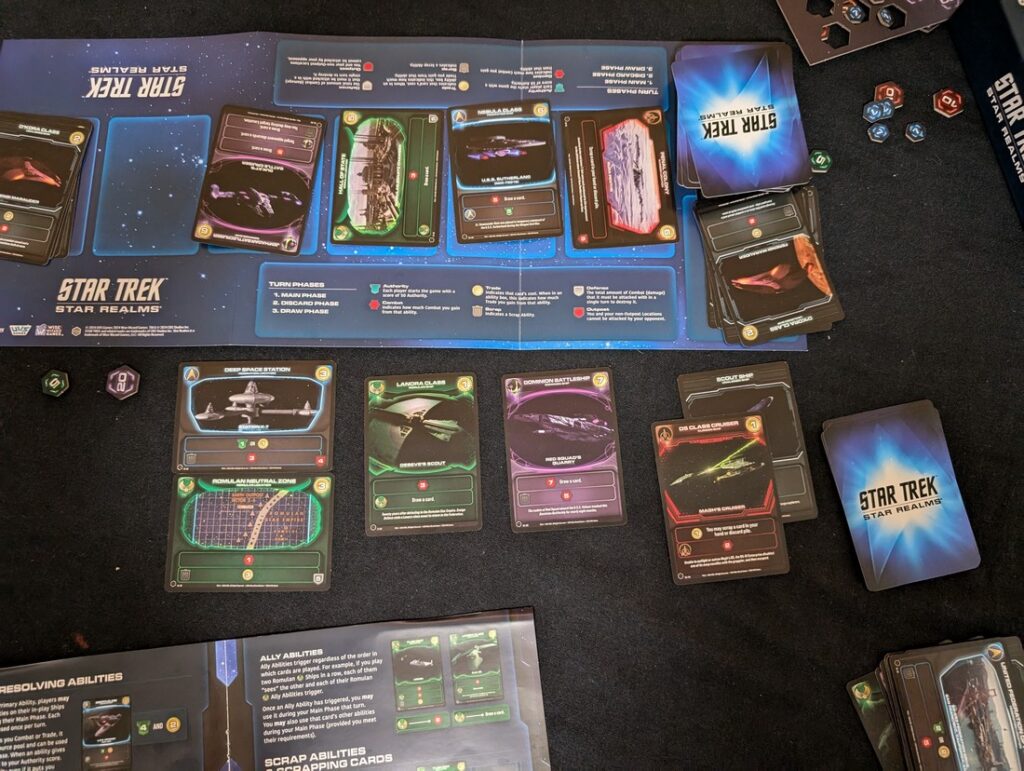
Discard and Draw Phase
The Discard Phase is much shorter than the Main Phase. It consists of the player discarding any Trade and Combat that was not spent, your Ships in play, and the remaining cards in your hand. Basically, everything on your playfield and in your hand, aside from the Locations/Outpost cards, are put in your Discard pile.
The third and final phase is the Draw Phase. After the Discard Phase, the player should have an empty hand and playfield (save their Outposts). Start the Draw Phase by drawing five new cards from your deck. Eventually, your Personal Deck will deplete and run dry after rounds of gameplay. When your deck is empty, shuffle your Discard Pile and place it face-down to become your new Personal Deck.
You are ready to play the game now that you know the Three Phases! The first player goes through the phases, and after ending the Draw Phase, it is the second player’s turn to do the same. Players repeat the cycle of phases until a player loses all their Authority points.
Verdict
Initially, the instructions seemed confusing. However, as we started playing, the process of building our decks and strategizing with Ally cards and Scraping became clearer. It turned out that actively playing while consulting the instructions during phases was the most effective approach. Early on, the rounds progressed quickly, with limited actions available during the Main Phase. However, as our card collection grew, the Main Phase became more action-packed, leading to rapid damage accumulation and more extensive Trade and Damage Pools.
As we began to collect more cards, we initiated ‘Scrapping’ our ‘Scout’ cards to draw better ones from the ‘Trade Line’ whenever actions from other cards allowed us to.
For my first deck builder game, I went in unsure of what to expect but had a blast! The booklet contains a list of additional play styles for multiple players. These offer more strategic possibilities, and the game promises extensive replayability. Playing with bigger groups will promise more engagement, action, and chaotic fun.
Thank you to UVS Games for providing a copy of the game for this review.

